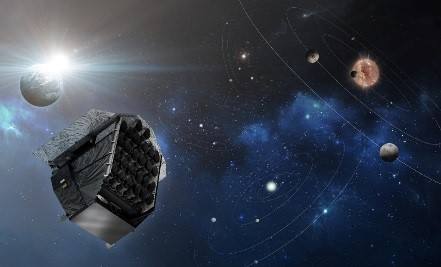The construction of ESA's Plato mission to find and study planets beyond our Solar System will be led by Germany’s OHB System AG.
The construction of the European Space Agency's Plato mission to find and study planets beyond the Solar System will be led by Germany’s OHB System AG as prime contractor, marking the start of the full industrial phase of the project.
The €288m contract was signed on 4th October at the 69th International Astronautical Congress in Bremen, Germany. The contract covers the delivery of the satellite, including the testing phase leading to launch, support during the launch campaign, and the in-orbit commissioning phase.
The Plato mission (PLAnetary Transits and Oscillations of stars) is scheduled for launch in 2026. It is the third medium-class mission in ESA's Cosmic Vision programme. Its objective is to find and study a large number of extrasolar planetary systems, with emphasis on the properties of terrestrial planets in the habitable zone around solar-like stars.
The spacecraft will be built and assembled by OHB together with Thales Alenia Space (France and the UK) and RUAG Space of Switzerland.
Thales Alenia Space, France, is responsible for avionics, i.e. the on-board handling of data as well as satellite positioning and orbit control. Thales Alenia Space in England will be integrating and testing the satellite platform. RUAG Space will design and manufacture the optical bench,
The German Aerospace Center (DLR) and a consortium of various European research centers and institutes will provide the scientific instrument, consisting of an array of 26 cameras and electronic units, that will observe a large patch of the sky on the lookout for planets.
Plato will not only seek new planets but will also investigate the properties of their host stars, and determine the planetary masses, sizes and ages with unprecedented accuracy. This will help scientists understand the architecture of exoplanet systems and determine whether they might host habitable worlds. In addition, Plato will also perform asteroseismology – the study of seismic activity of stars – providing insight into stellar interiors and evolution.
The mission will expand on the work of Cheops, ESA’s upcoming exoplanet watcher, which will be launched next year to perform a first characterisation of known planets. It will be followed by Ariel, scheduled for launch in 2028, which will observe a large and diverse sample of exoplanets to study their atmospheres in great detail.
Plato will operate from Lagrange point 2 — 1.5 million km beyond Earth as seen from the Sun.

